A giant walk-in space for immersive digital art in London’s West End has become Britain’s most popular visitor attraction, outpacing the city’s most visited art institution, the British Museum. Outernet in December announced that it recorded 6.25 million visitors in its first year of operation, while the British Museum attracted 5.83 million visitors in 2023. The world’s most visited art museum, Musée du Louvre in Paris, received 8.86 million visitors last year.
Outernet is just one among 100-plus such spaces—which this writer calls immersive institutions—to have emerged in the past five years, forming a series of consciously global networks and signalling a tipping point in the way the world consumes visual culture while posing a challenge for museums and galleries in their present form. Whether they turn out to be partners or competitors for museums and galleries, the immersive institutions—backed by the world’s leading investors and showing a new wave of global digital artists—are a powerful emerging force. For many museums, it is a question of when, not if, they engage.
The most spectacular recent demonstration of the phenomenon has been Las Vegas’s Sphere—a vast $2.3bn, 365ft tall, 20,000-capacity domed performance venue that features work from artists including Refik Anadol, Marco Brambilla and Es Devlin for its opening in September 2023, where the rock band U2 is at present in residency.
To András Szántó, the author of The Future of the Museum: 28 Dialogues, this is “a classic case of external, potentially disruptive innovation. What it says about the challenges of the art museum in the 21st century is that it will have to compete for the public’s interest (and leisure spend) when it comes to visual experience—and it may not always win.”

Access all areas: with three sides opening onto London’s Charing Cross Road, Outernet encourages passers-by to watch a screening of Marco Brambilla’s Heaven’s Gate Louis Jebb
These venues are participants in the wider visitor and tourist economy. They may not be designed to compete with traditional institutions but, by acting in the same markets, they have the effect of doing so, with the accompanying challenge, and opportunity, for museums and the bodies that fund them. “How could funders help?” Szántó says of the challenge. “Well, by funding.”
A spokesperson for Outernet tells The Art Newspaper that the technology it uses to count visitors—on a site open on three sides to passers-by on one of London’s busiest streets and featuring three digital screening spaces and a 2,000-seater concert venue—includes tech provided by the video analysis company BriefCam “to provide audience engagement and demographics data”.
Outernet’s visitor figures are a striking statistical example of a trend that has been growing over the past five years. There are now more than 100 immersive institutions around the world, with new spaces due to open this year in Abu Dhabi, Hamburg and Shanghai.
Origins of the immersive institution
The first of this new wave of big-scale institutions opened in 2018 in Paris’s XIth arrondissement. In Atelier des Lumières, Culturespaces defined an approach for how immersive institutions have gone on to evolve: in their content, in their use of buildings, in how they are financed and in their global ambitions. It also pioneered the primary digital storytelling format for these venues: a non-linear documentary format blending animated visuals with soundtrack and voiceover, and using digital projection or video walls combined with surround or spatial audio to spread the story over walls, floors and ceilings. The impact was immediate; in Atelier des Lumières’s first nine months it attracted more than 1.2 million visitors.
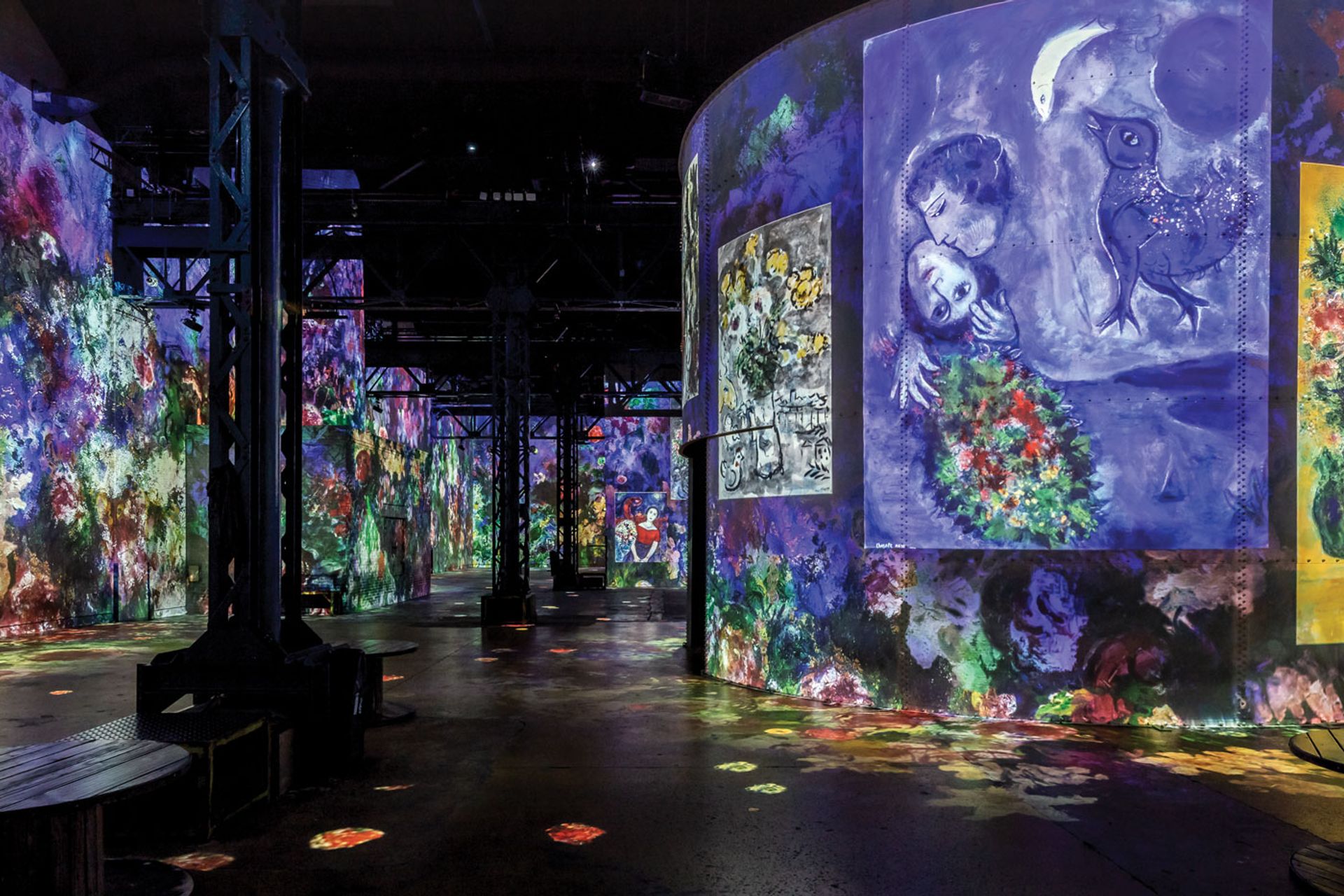
Chagall at L’Atelier des Lumières, Paris © Culturespaces / Eric Spiller
This non-linearity reached a peak with Lightroom’s 2023 David Hockney show in London. Split into nine chapters, Bigger & Closer (not smaller & further away) was a journey through Hockney’s work that you could enter or leave at any point.
In the summer of 2018, meanwhile, the Tokyo digital arts collective TeamLab launched Borderless as a dedicated museum space showing its own work only. In its first year, 2.3 million people visited—more than went to the Van Gogh Museum in Amsterdam in the same period, making a collective with marginal mainstream recognition the most popular single-artist museum in the world. The Lume, Grande Experiences’ permanent venue in Melbourne, had more than 700,000 visitors in its first year (2021-22), while in the same city the National Gallery of Victoria, Australia’s most popular museum, recorded 1.6 million visitors in 2022.
The spectacular digital art found in immersive institutions is different and sometimes overlooked by the art establishment, though it has its critics. The Art Newspaper’s Ben Luke has described it as “a kind of hybrid format between installation and son et lumières, emphasising spectacle over more resonant content”. The sector has a different business model to traditional institutions, a different investor base and has created new global opportunities for digital artists—with practitioners such as Anadol and Gabriel Massan emerging, and established artists such as Brambilla and Barbara Kruger joining the space—and has encouraged a radical new style of “media architecture”.
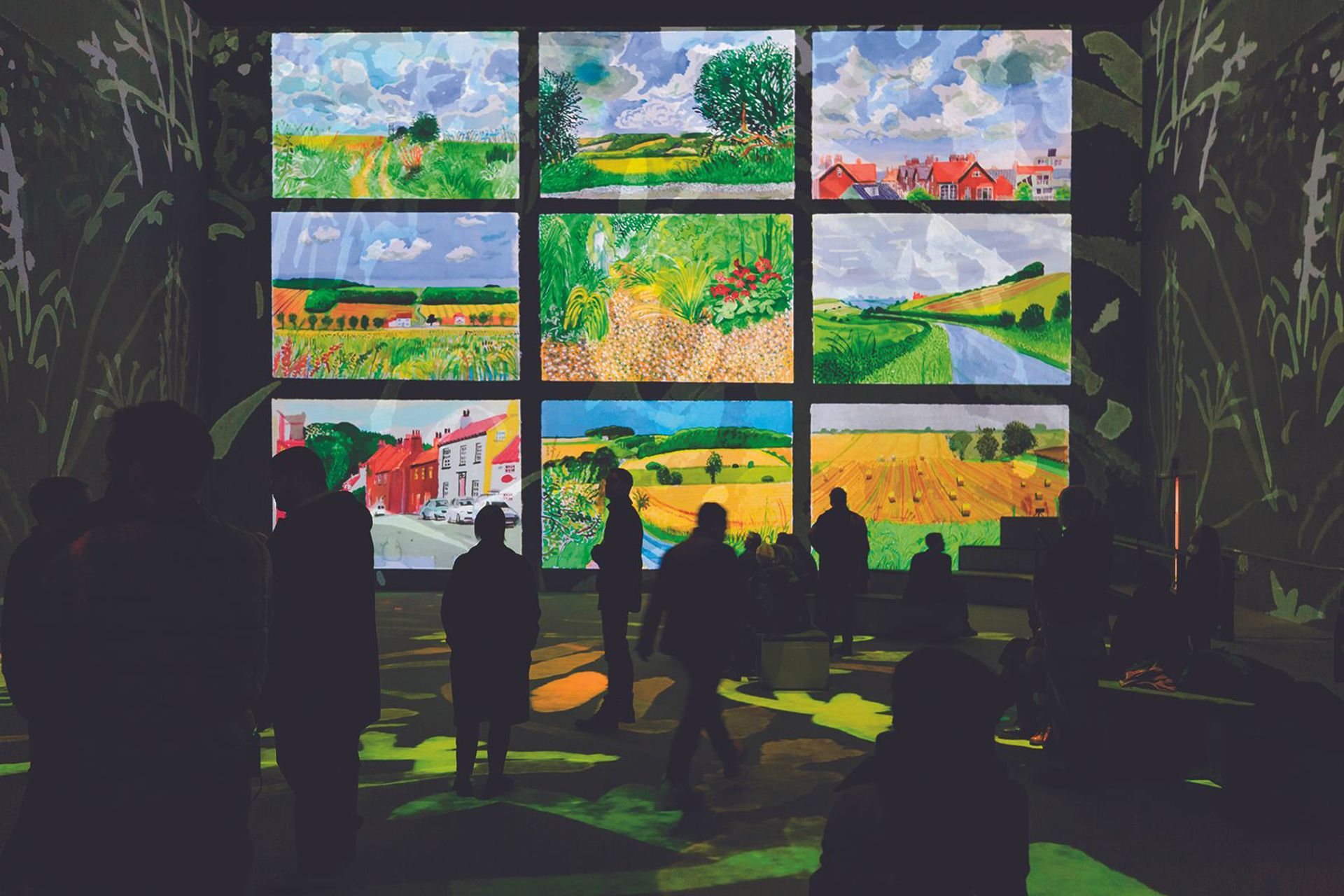
David Hockney’s Bigger & Closer (not smaller & further away) at Lightroom, London, 2023
Photo: Justin Sutcliffe
Immersive institutions also offer a fresh range of experiences for audiences of art and culture. There is demand, according to Alexandra Payne, the head of creative at Outernet, because they are “creating experiences worth sharing, and communal experience” that they see “audiences craving”. To Brambilla, an established film-maker and digital artist who has worked with both Outernet and Sphere, the communal, on-location point about the scale and the need to be present was brought home at the latter in particular. “They have really created something completely new,” he says. “You can’t really Instagram it [or capture it in one phone image]. These are experiences that you cannot have at home.”
Emerging business models
Beneath the surface there are business models, and new approaches to financing, designed to help venues last beyond the life of a single show. Lightroom emerged in London last year from a partnership between London Theatre Company—led by Nicholas Hytner, the former artistic director of the National Theatre—and 59 Productions, one of the city’s most successful exhibition and experience design companies.
The two successful, but still small, creative enterprises are building a global business with investment led by the billionaire Len Blavatnik’s Access Entertainment and Michael Sherwood, the former co-chief executive of Goldman Sachs. Blavatnik is an important figure in traditional art and culture; he was the donor whose gift enabled the creation of the Blavatnik Building, the extension to London’s Tate Modern in 2016. At this early stage, the longer term impact of immersive institutions is unclear, but it is just possible that Blavatnik may have funded both the Tate and one of its biggest 21st-century competitors.
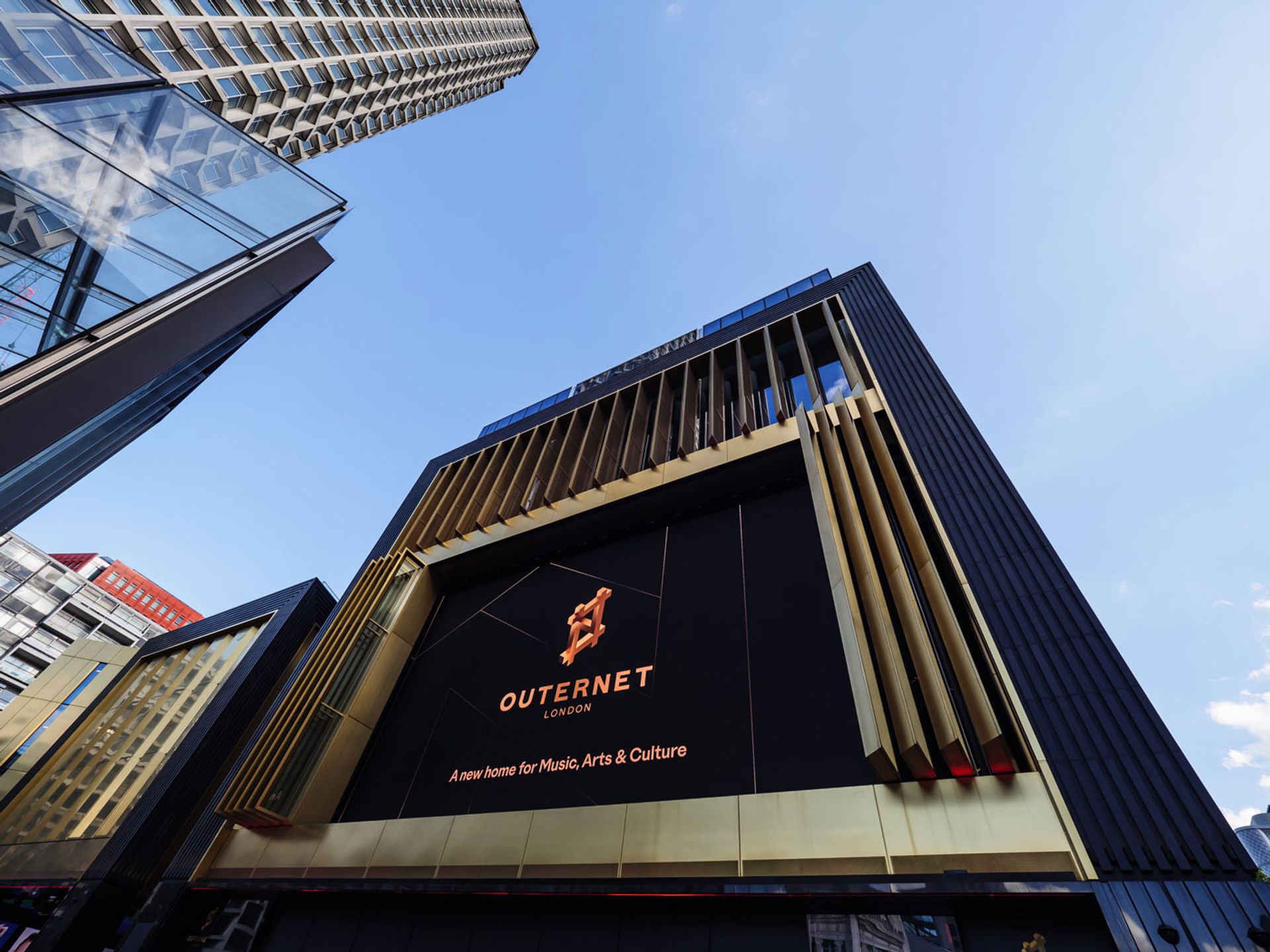
Institutional investors in the art sector: Outernet, London, is backed by Stephen Schwarzman’s Blackstone Group Maria Zhytnikova/Red Flame Creations
The emergence of investment in these digital-age galleries from private equity and other large-scale institutional investors is one of their defining features, creating new connections with art and culture. Outernet is backed by Stephen Schwarzman’s Blackstone Group—the same Stephen Schwarzman who gave £175m to Oxford University to create its new Centre for the Future of the Humanities, complete with a 500-seat concert hall. TeamLab’s new site in Abu Dhabi is on Saadiyat Island, home to the Louvre Abu Dhabi and to the much delayed Zayed National Museum and Guggenheim. A collaboration with the Department of Culture and Tourism and the Miral Group, TeamLab’s project, announced in June 2022, is due to open this year and is already more than 70% complete. (TeamLab also has four permanent venues in Japan and China, with Saudi Arabia to follow.)
Hybridity may be the word that best describes the immersive institution’s business model. London’s Outernet displays digital art, but is exploring business models that align art with advertising and different forms of entertainment. Outernet’s Room to Breathe project, which ran from November 2022 to February 2023, was a digital arts-based meditation and wellness themed installation supported by the paracetamol brand Panadol.
Brambilla saysthat at both Outernet and Sphere, technically ambitious digital art “is attached to an experience to make it [financially] feasible”: through advertising at Outernet and tickets to live performances at Sphere, where U2 is performing surrounded by pieces by Brambilla and Devlin.
Global scale through global networks
A feature of immersive institutions, and one that ties them most to the digital world, is their intent to multiply and form global networks, resulting in international creative cultural institutional brands that will compete to establish themselves over the coming decade.
Culturespaces explicitly describes its digital art centres as a network able to circulate content across a group of eight venues in France, New York, Seoul and Jeju in Korea, Amsterdam and Dortmund, with a ninth to come this year in Hamburg. London’s Lightroom has already opened its second venue, in Seoul, where Hockney’s show opened last November. Sphere has pulled out of a London scheme after failed planning and political negotiations, but will likely find a base elsewhere.
A competitor using a smaller dome, Cosm, is looking for sites in the US. Outernet Global has announced new projects in New York and Los Angeles. Australia’s Grande Experiences has venues in Melbourne and Indianapolis. Frameless opened in London in 2022 with aspirations to globality. The digital art group D’Strict has multiple sites across Korea, with temporary interventions worldwide connecting back to its home in Seoul. And the US’s Artechouse has spaces in New York, Miami and Washington, DC.
According to Peter Tullin, the co-founder of Remix Summits and a board member of both Grande Experiences and Museums Victoria, “TeamLab changed the rules. They have built a global brand not only through the development of leading-edge immersive technology combined with 21st-century digital art to develop captivating experiences but through the integration of spectacular imagery that visitors eagerly share through social media. This model has allowed them to bypass the traditional gatekeepers such as museums and galleries.”
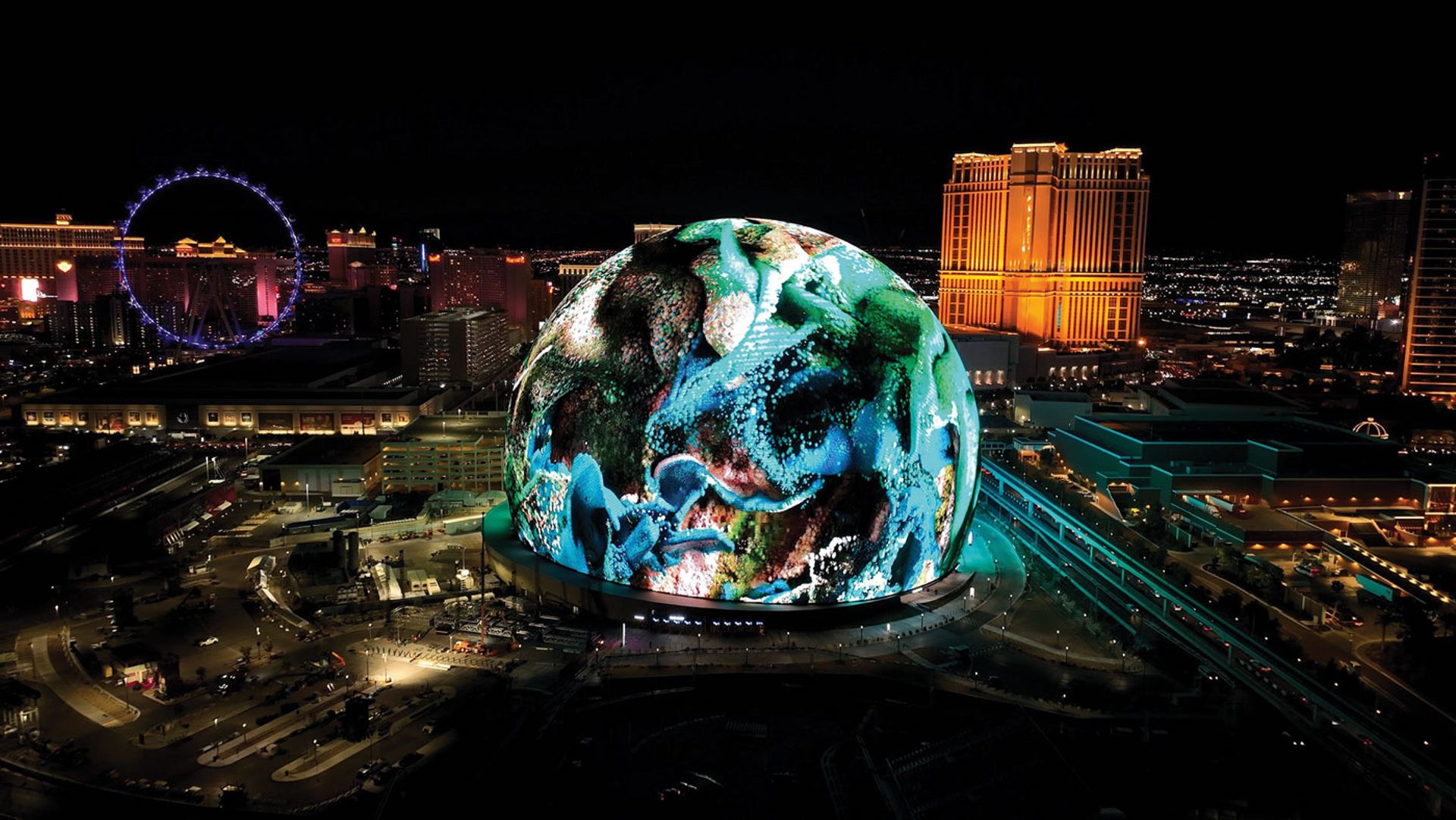
Refik Anadol’s work Machine Hallucinations: Sphere covers video screens on the exterior of Populous-designed Sphere in Las Vegas ByDroneVideos
The growth of “media architecture”
One of the most radical effects of the immersive institution may be in expanding the niche “media architecture”—the use of audio-visual technology as part of the design surface of buildings—to become an entirely new category of urban building. Culturespaces pioneered interventions in existing heritage or disused industrial spaces, a model much copied that offers the kind of large-volume spaces museum curators crave, but at a fraction of the cost. TeamLab, Lightroom, Frameless, D’strict and more have made interventions in new-built mixed-purpose commercial developments.
But Las Vegas’s Sphere, opened by an offshoot of the entertainment company MSG in 2023, is something architecturally more significant. It is a spherical dome covered entirely in video screens inside and out. It is both a radical new form of entertainment venue, and the way to a new form of architecture. The artist Marco Brambilla describes it as “Utopian architecture that is dynamic. People should really pay attention to that. It is essentially in the spirit of the 1960s plug-in city, creating a space that takes on whatever form the content gives it”.
Driven by declining costs in LED video panels—and with similar developments in transparent LED panels, demonstrated at the Consumer Electronics Show in Las Vegas last month, following close behind—Sphere is a significant gesture towards a future where buildings everywhere could become a play of frenzies of digital light and shadow.
What happens next?
Can this moment of intense innovation in the creation of a new kind of art gallery last? Immersive institutions are exposed to the market in a way galleries and museums are not, and betting on their permanence would be unwise. Like the panoramas and music halls of the past, they may fade as fashions change. Already we have seen ventures in this category, such as Superblue London, recede just as others have blossomed.
But this is a moment when museums and galleries must decide, according to Szántó, “when to engage”. Some have already; in 2022 the National Museum of Australia collaborated with Grande Experiences on Connection, based on the work of more than 110 First Nations artists and musicians, perhaps the largest example to date. “The museum is known for exploring and sharing First Peoples’ stories globally, for increasing accessibility and for bringing our stories alive,” says Margo Ngawa Neale, the National Museum’s lead Indigenous curator and a consulting curator on Connection. “There can be no better way to bring our songlines stories alive than through this awe-inspiring multi-sensory display of Connection. This is the 21st century and younger demographics inhabit the digital domain. If we want to expose them to Aboriginal art and culture, we need to meet with them there.”
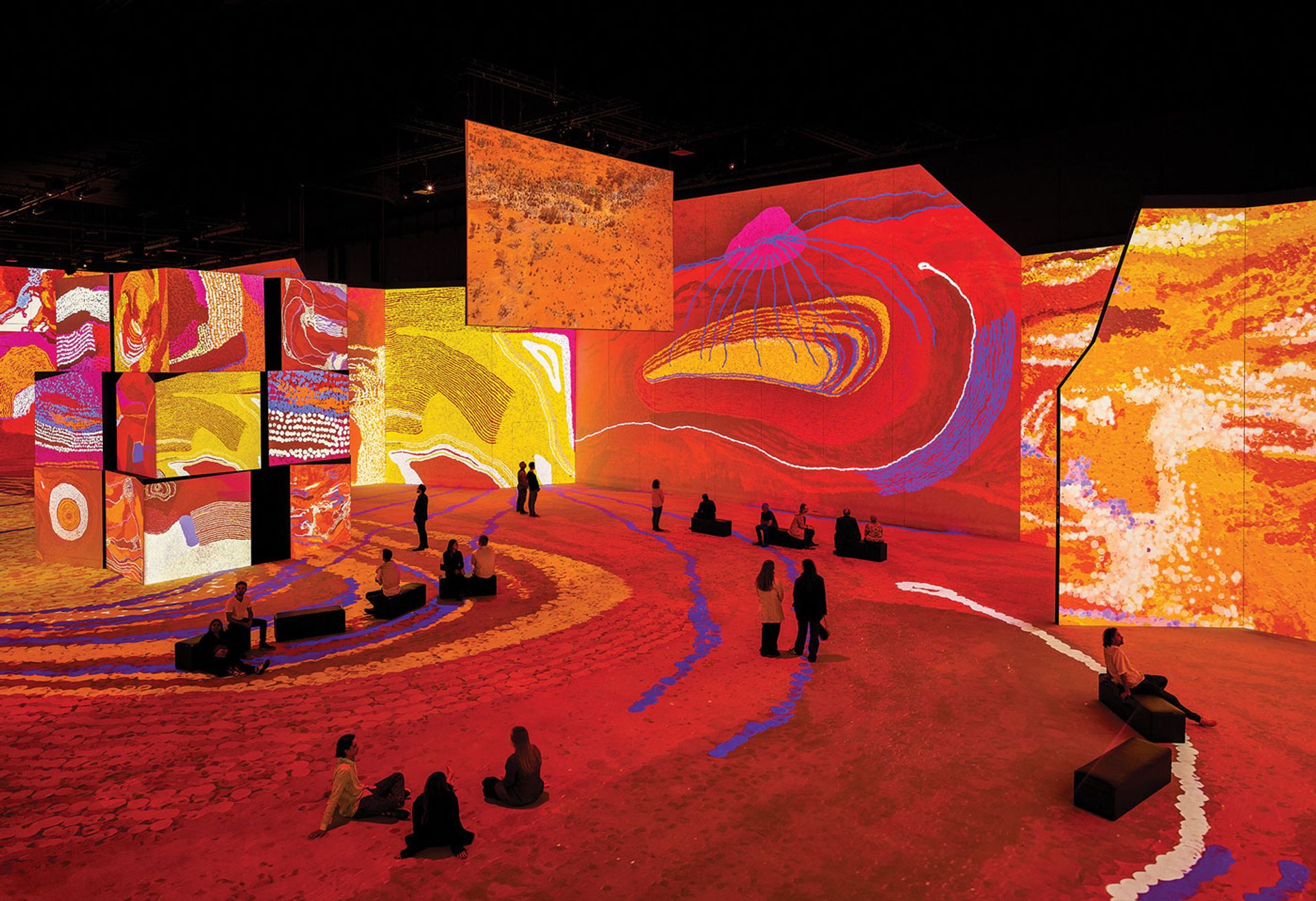
Connections, an exhibition of First Peoples’ art, is at The Lume, in Melbourne, until 4 February The Lume
Payne points out that Outernet has already partnered with the Saatchi Gallery, Serpentine and Frieze London, “proving that the market and desire for immersive experiences is big enough to support us all. Our advice to museums and galleries is to continue to be open to these types of collaboration.” The Serpentine’s collaborations with Outernet include presentations for Gabriel Massan’s Third World game in 2023 and for Kruger’s current show (until 17 March).
There can be no better way to bring our songlines stories alive than through this awe-inspiring multi-sensory display of Connection. This is the 21st century and younger demographics inhabit the digital domain. If we want to expose them to Aboriginal art and culture, we need to meet with them there
Margo Ngawa Neale, lead Indigenous curator, National Museum of Australia
Elsewhere, the National Portrait Gallery in London welcomes the emergence of this new kind of attraction, telling The Art Newspaper it has “always been part of a vibrant and varied community of visitor attractions, and we welcome the emergence of digital and immersive experiences, which engage audiences with art and culture”.
The opportunities are significant if museums and galleries find ways to positively respond. Tullin says museums cannot afford to be complacent: “There are huge opportunities for the cultural sector if they embrace this new frontier but the immersive revolution is also bringing with it new competitors on a scale never before seen.”
- Chris Michaels is an art and technology consultant, author of the Creative R&D newsletter, vice chair of English Heritage and former director of digital, communications and technology at the National Gallery, London










